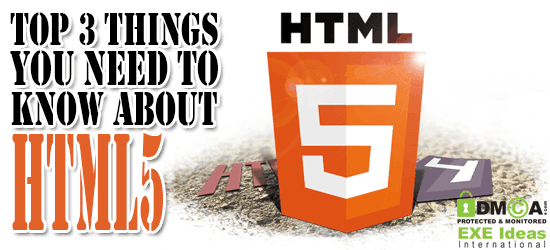The Web is finally getting its much needed revival with the HTML5 (Hypertext Markup Language). HTML is the language being used to display web pages in a browser. From fonts to colours, graphics, and other content embedded on a page all of these are made possible via HTML. Adobe is on the final stages of its development of HTML5. Although set to be released on 2014, various sites have already been using it. This hybrid code bypasses Flash, making it almost obsolete with its simplified and standardized coding.
For the longest time, programmers have been divided in the area of Flash to HTML5 conversion. Some programs work on Flash alone while others need HTML. There seems to be no middle ground. HTML5 unites these two while providing a better user experience. Google Developer Advocate Seth Ladd said, “HTML5 is the future of the web and developers who take advantage of the newest web technologies will be able to create a better user experience, better development tools and allow for rich applications.” Let’s take a look at the top three things you need to know about HTML5.
Table of Contents
HTML5 Works On Multiple Platforms:
Adobe Vice President and General Manager Danny Winokur said it best, “Adobe is all about enabling designers and developers to create the most expressive content possible, regardless of platform or technology.” The HTML5 is built to run seamlessly on the web, mobile devices, and tablet readers. He added that HTML5 is now “universally supported on major mobile devices.” Apple is popular for not supporting Flash-run programs and apps but it embraces HTML5. With more and more people relying on apps on their smart phones and tablets, HTML5 addresses the integration of the web and mobile-based applications impeccably. Programmers are already using it to address cross-platform development issues. Now you don’t have to learn a new language if you want to work in the mobile arena or the web. HTML5 will give you the best of both worlds.
HTML5 Works On All Browsers:
Whether you are using Google Chrome, Mozilla Firefox, Internet Explorer, Safari, or other browser, HTML5 works perfectly on it. Google has paved the way for HTML5 by exploring its features early on. Ladd adds, “HTML5 technologies ensure that various functionalities, such as video or 3-D graphics, will just work within any browser, regardless of the device they are being accessed on.” He also said that HTML5 provides common behaviours that run on any browser thus lessening the codes that programmers write. The latest updates for Chrome, Mozilla, and IE are all running on HTML5. That’s a clear indication of better browsing experience for end users.
HTML5 Works Beautifully:
The New York Times reported that programmers and engineers attest that sites run on HTML5 are “visually rich and lively” in the same way applications are seen in an iPad or Android tablet. It is eye candy for the web so to speak. HTML5 provides better typography and customized fonts that allows for more dynamic visual experience. The ability to adopt web fonts is beneficial for programmers as it frees them from Flash limitations that often do not work for translated text or even search engines. HTML5 also delivers a richer experience to its users with its streamline development and new API (application programming interface). Although Flash is popular for videos, HTML5 makes video embedding easier with its built-in video support and standard <video> tag. Audio content is run via the <audio> tag.
The ultimate goal of HTML5 is to standardize and integrate all of the technology and design changes that had transpired over the last 15 years. Early reviews from programmers affirm that it has succeeded in doing that. The way it has standardized and unified multiple browsers and platforms without compromising quality user experience indicates the superiority of HTML5. With leading websites such as Google, Facebook, Wikipedia, YouTube, and Twitter using HTML5, you can be assured that it is indeed the new face of the web and it will stay that way for very a long time. The World Wide Web is getting the spotlight again all because of the new HTML5. This new language is providing simple yet dynamic tools for remarkable user experience in the web.
 About the Author:
About the Author:Jamaica Sanchez is a professional writer and website developer who is a big advocate of flash to html5 conversion. She also has a passion in dancing, cooking and playing golf.




















Very useful information for people who were unaware of this fact ..Thanks for sharing it .
-Pramod
You Are Welcome And Thanks For Reading Our Article…